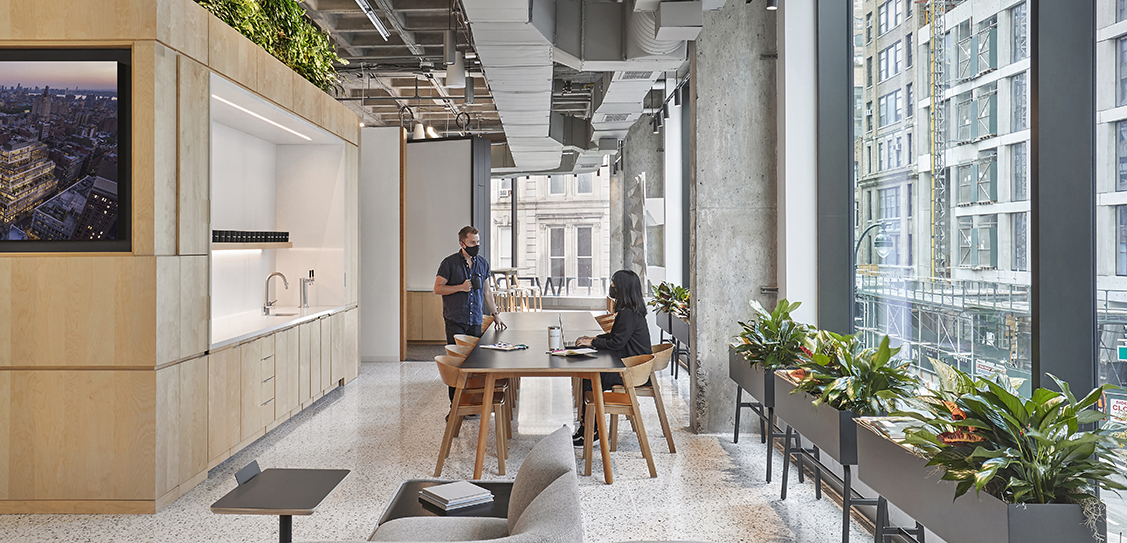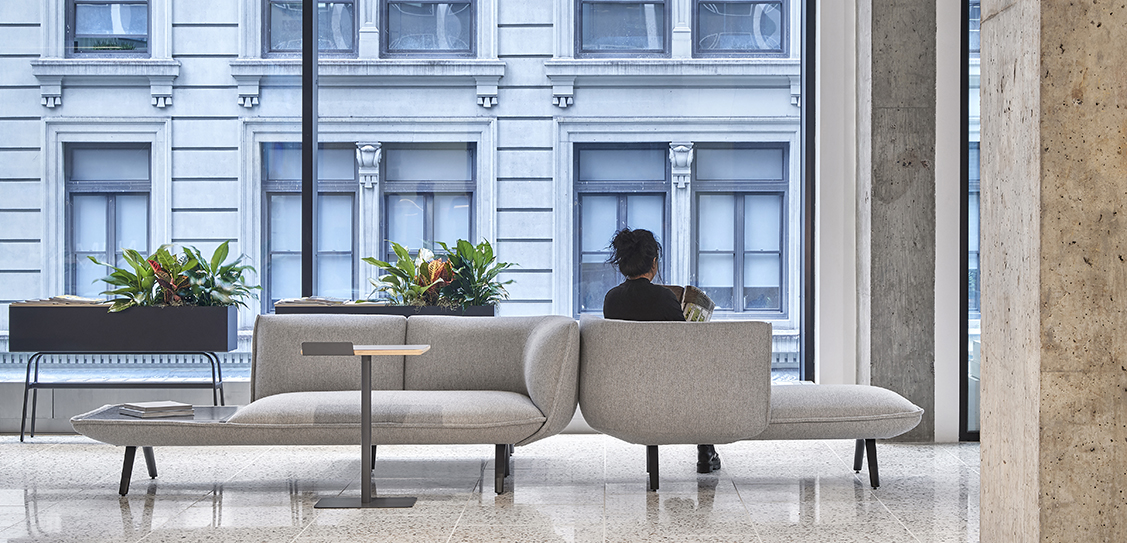The vision for the studio was to create an agile and intuitive space that can pivot to accommodate behavioral, cultural, and technological change in the workplace.
The firm also developed a Return-to-Studio (RTS) app where staff can check-in and check-out of the office from their smartphones. This helps reduce density by scheduling employees for on and off days that alternate studio seating. The RTS app also surveys staff for symptoms of illness before coming into the studio. This enables Perkins&Will to conduct track-and-trace in line with current COVID-19 guidelines.
Our first priority is making sure the staff feels safe and comfortable returning to work. Beyond that, we’re most looking forward to re-committing to the values our workplaces have come to represent: a sense of belonging, a social community, and a strong design culture, many of which we previously took for granted.
Led by Interior Design Director Brent Capron, the team harnessed insights from staff to create a workplace that is flexible, agile, and receptive to new workplace norms. Already designed for resilience, Capron and his team had little to change in the wake of COVID-19.
The design team engaged their colleagues in workshops and led interdisciplinary forums to understand the dynamics, and possibilities, of agility and what it really means for the workplace of the future. One key design feature, unassigned workspaces, encourages interdisciplinary collaboration, while closed and open meeting rooms prove to be more pertinent than ever.
The design process is celebrated and displayed throughout the space, from the 70-foot pin-up boards to model-making and renderings displayed on digital screens. The studio's layout encourages cohesion and collaboration between teams through a blending of spaces.
The studio's design incorporates learnings from Perkin&Will's experience with clients in the broadcast media industry. For example, AV systems come with birds' eye view cameras for real-time collaboration in meetings, drawing sessions, and cross-office broadcasting; this supports new hybrid work models and remote work.
Wiring was strategically placed for future reconfiguration of rooms, allowing for a variety of "plug-and-play" activities. Additionally, an LED video wall offers an interesting feature for clients and visitors touring the space.
Sensors in each room measure light, sound, temperature, and humidity to provide an optimal experience for staff. The practice also introduced regulated clean airflow systems that mitigate the spread of airborne pathogens.



